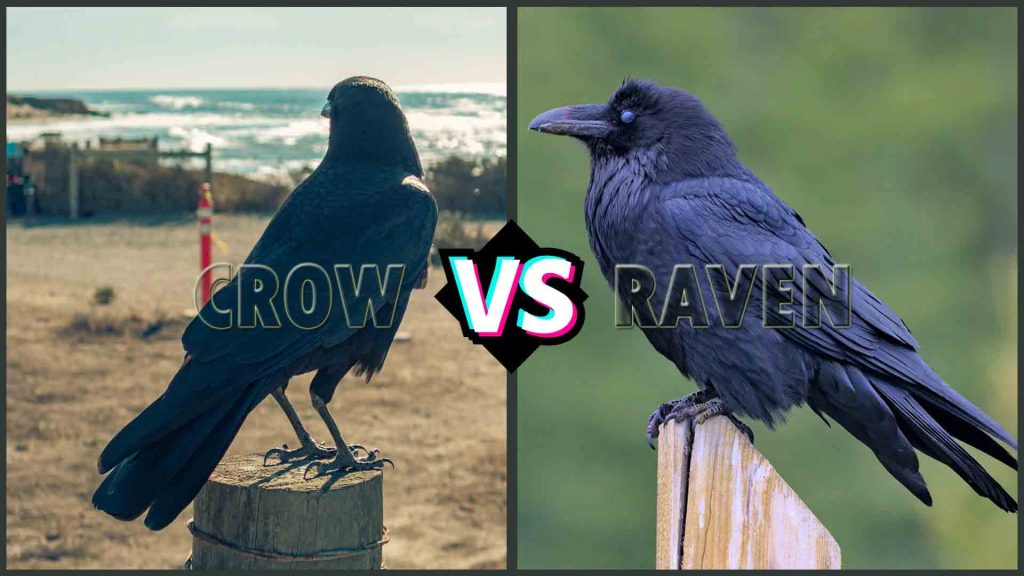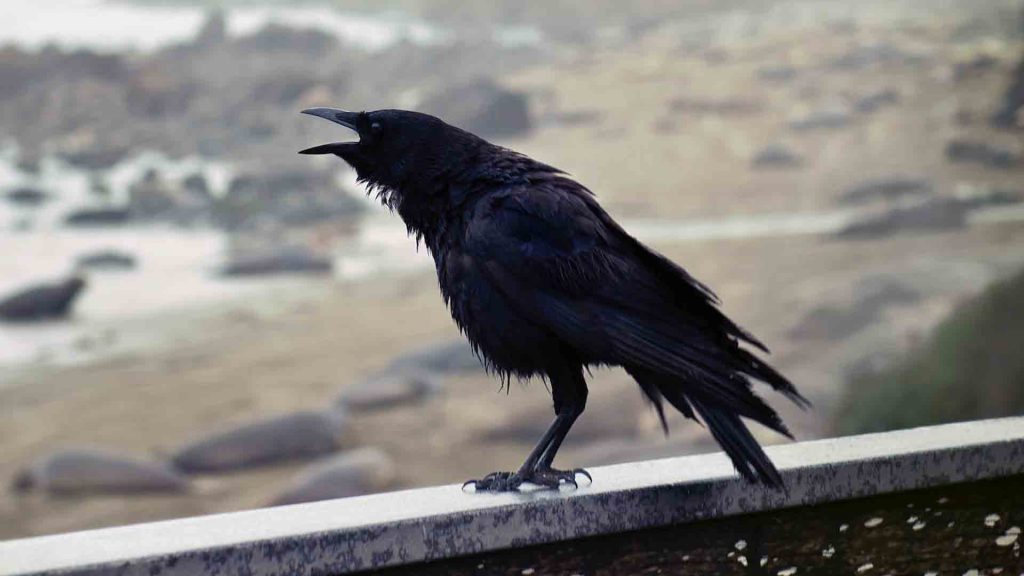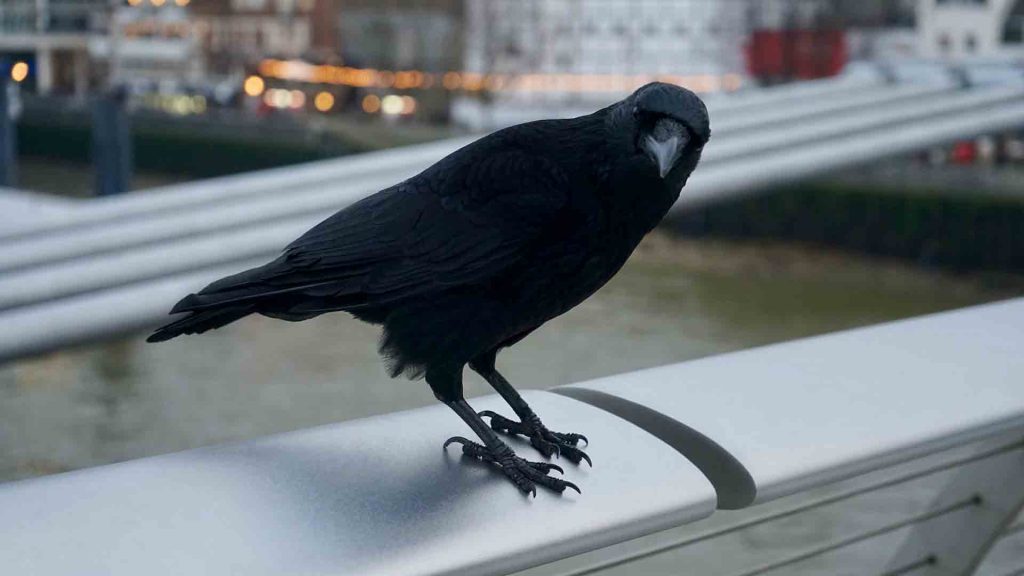
Crow vs. Raven
Birdwatchers and nature enthusiasts often find themselves captivated by the intelligent and enigmatic members of the Corvidae family, namely crows and ravens. While these birds share several common traits, they also exhibit distinct differences in size, shape, feathers, wings, sounds, tail shapes, and intelligence. This blog aims to delve into the fascinating world of crows and ravens, shedding light on their unique characteristics and dispelling some common misconceptions.
What are the Differences Between Crow and Raven?
This differentiation table summarizes the key features that distinguish crows from ravens:
| Feature | Crow | Raven |
|---|---|---|
| Size | Smaller (32-40 inches wingspan)1 | Larger (39-46 inches wingspan)2 |
| Shape | Sleek and slender | Robust and heavier |
| Feathers | Glossy, bluish or purplish tint | Shaggy, textured, metallic sheen |
| Wings | Broad and rounded | Pointed for enhanced soaring |
| Vocalizations | Diverse, including caws and clicks | Deeper and more guttural |
| Tail Shape | Fan-shaped, squared off at the end | Wedge-shaped for soaring flight |
| Intelligence | Highly intelligent, tool users | Highly intelligent, tool users |
| Cultural Significance | Varied roles in mythology and folklore | Varied roles in mythology and folklore |

Differences in Size and Shape: (Crow vs. Raven)
Crows: Crows, generally, are smaller in size compared to ravens. Their bodies are sleek and slender, with a wingspan ranging from 32 to 40 inches.1 The tail is fan-shaped, and their overall appearance is more compact.
Ravens: In contrast, ravens are larger and more robust. They boast a wingspan of 39 to 46 inches2, and their bodies are heavier and more substantial. Ravens also have wedge-shaped tails, contributing to their distinctive silhouette.
Feathers and Wing Structure: (Crow vs. Raven)
Crows: The feathers of crows are typically glossy and have a purplish or bluish tint. Their wings are broad and rounded, allowing for agile flight in various environments. Crows are known for their adaptability and can thrive in urban as well as rural settings.

Ravens: Ravens, on the other hand, have shaggy and more textured feathers with a metallic sheen. Their wings are more pointed, which enhances their soaring capabilities. Ravens are often associated with wilderness and are found in diverse ecosystems, from mountains to forests.
Vocalizations: (Crow vs. Raven)
Crows: Crows are renowned for their diverse vocalizations. They produce a wide range of sounds, including caws, clicks, and complex patterns. The cawing of crows is often depicted in popular culture and is a characteristic sound of many landscapes.
Ravens: Ravens, too, are highly vocal birds. Their calls are deeper and more guttural compared to crows. Ravens are capable of mimicking sounds from their environment, showcasing a remarkable ability to communicate and interact with their surroundings.
Tail Shape Difference: (Crow vs. Raven)
Crows: Crows have a fan-shaped tail, which is squared off at the end. This tail shape aids in their swift and precise aerial maneuvers, especially when navigating through urban landscapes.
Ravens: Ravens, with their wedge-shaped tails, exhibit a different aerodynamic design. This tail shape is an adaptation for soaring flight and contributes to their impressive acrobatics in the air.
Intelligence of Crows and Ravens:
Crows: Crows are renowned for their exceptional intelligence. They are known to use tools, solve complex problems, and even demonstrate a level of self-awareness. Some studies suggest that crows can recognize themselves in mirrors, a trait associated with high cognitive abilities.3
Ravens: Ravens, too, are considered highly intelligent birds. Their problem-solving skills and ability to plan for the future are well-documented. Ravens have been observed using tools to obtain food, and their cognitive abilities rival those of great apes.4
Cultural Significance:
Throughout history, both crows and ravens have held significant cultural roles in various societies. In many mythologies and folklore, these birds are often associated with death, magic, or as messengers between the mortal and spiritual realms. The Norse god Odin, for instance, is accompanied by two ravens, Huginn (thought) and Muninn (memory), symbolizing their role as messengers and sources of knowledge.
Conclusion:
In the grand tapestry of the natural world, crows and ravens stand out as remarkable and intelligent creatures. While their similarities are apparent, the distinctions in size, shape, feathers, wings, sounds, tail shapes, and intelligence make each species unique. Understanding these differences not only enhances our appreciation for these birds but also provides insights into the diverse and intricate web of nature.
So, whether you find yourself in the midst of a murder of crows or a conspiracy of ravens, take a moment to marvel at the complexity and beauty of these corvids, for they are truly extraordinary beings.
References:
- McGowan, K. J. (2001). Common Raven (Corvus corax). The Birds of North America.
- Marzluff, J. M., & Angell, T. (2005). In the Company of Crows and Ravens. Yale University Press.
- Emery, N. J., & Clayton, N. S. (2004). The mentality of crows: Convergent evolution of intelligence in corvids and apes. Science, 306(5703), 1903–1907.
- Heinrich, B., & Bugnyar, T. (2005). Testing problem-solving in ravens: String-pulling to reach food. Ethology, 111(10), 962–976.